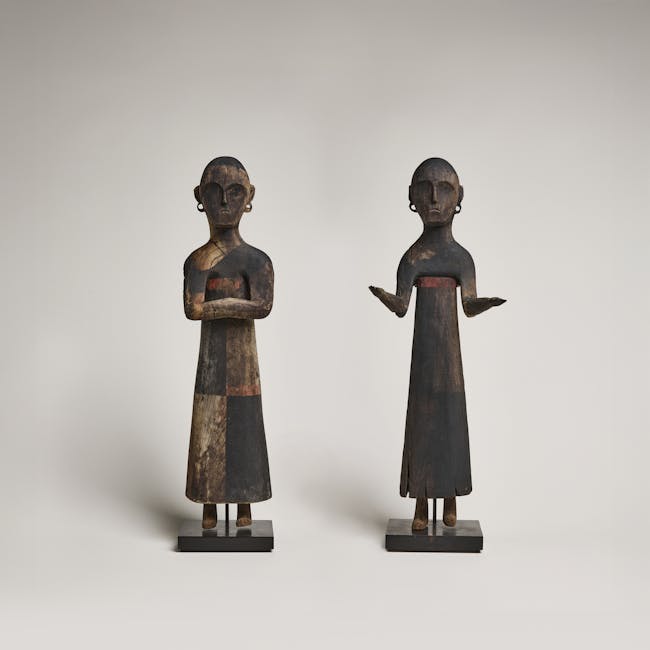A pair of stylized wooden standing figures, decorated with red and black pigments. These very early representations of human figures, which date from the Southern Chinese Chu Kingdom, have bodies which are carved from a single block of wood. One has its arms folded across its chest; the other has its arms outstretched - the underarms attached separately. Individual features have been carved into the face – the eye sockets hollowed out and the small nose protruding. Traces of colour decoration in black and red have been preserved – representing clothing, hair and facial features such as eyes. The ears have perforated earlobes, perhaps for some kind of jewellery. Their robes have alternating rectangular black and white panels and are draped diagonally over the left shoulder. Possibly real hair and clothing may have been added to these figures, as is the case with similar figures from the same period.
Funerary rituals in the Warring States period included different types of effigies. In China’s Northern states, such figures were made from clay, while those from the more southerly Chu state were generally made of wood. It is thought that these figures of attendants were associated with various household duties, the one with outstretched arms probably proffering something, the other waiting respectfully with arms folded. Such figures were buried close to the deceased rather than in adjacent chambers.
The excellent preservation of the wood is probably due to the effectiveness of the Chu burial techniques, aimed at preserving the remains of the deceased and the accompanying grave goods. The typical Chu tomb consisted of a series of sealed wooden chambers at the bottom of a very deep vertical shaft (14 meters or more) – well below a level most aerobic bacteria could thrive. The chambers were sealed almost hermetically by covering them with white clay and layers of charcoal, then topped with earth and a mound on top. Due to their depth many of the Chu tombs were flooded with ground water – the prolonged submersion ensuring even better preservation of the contents.







